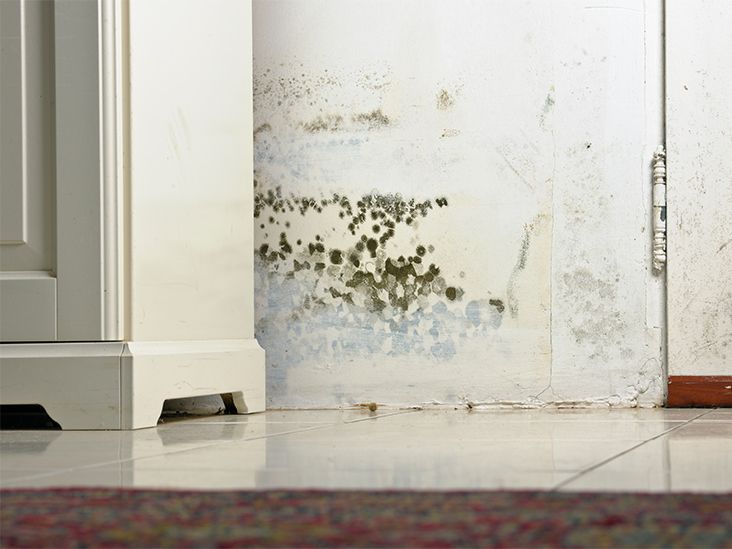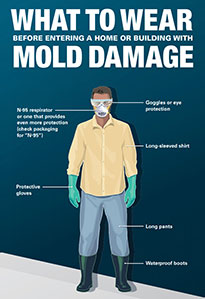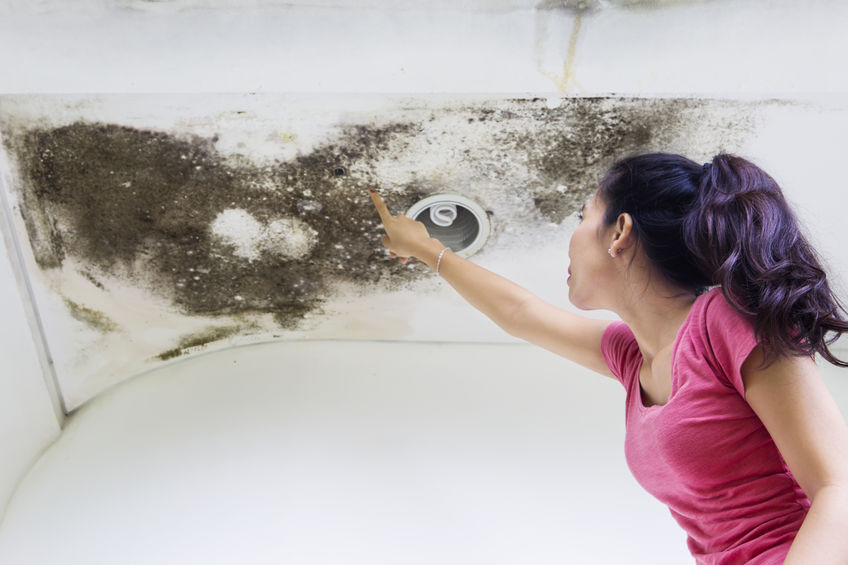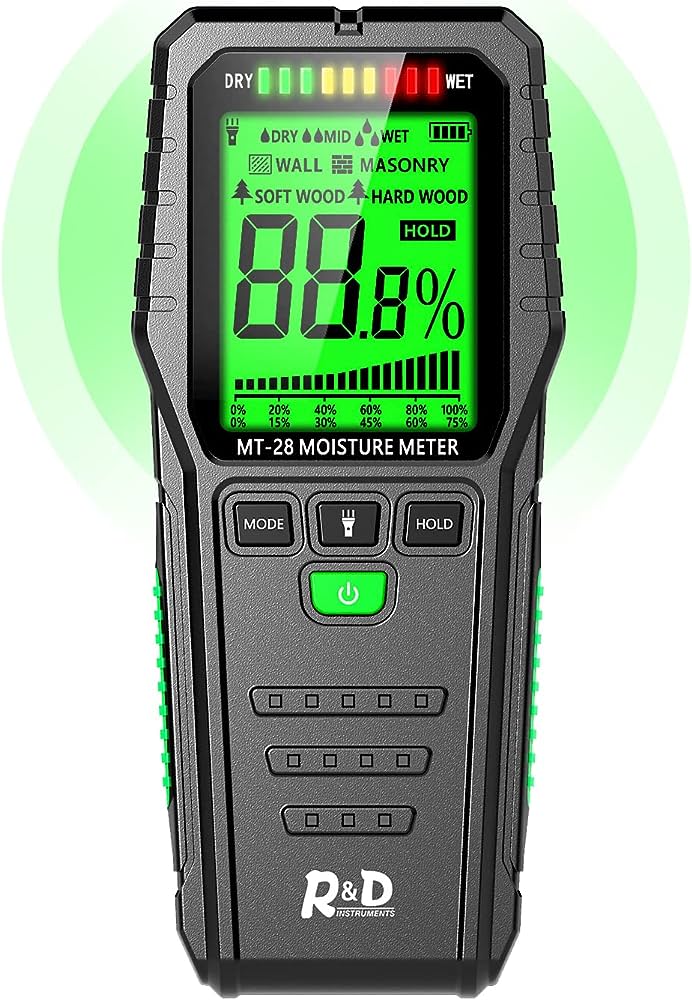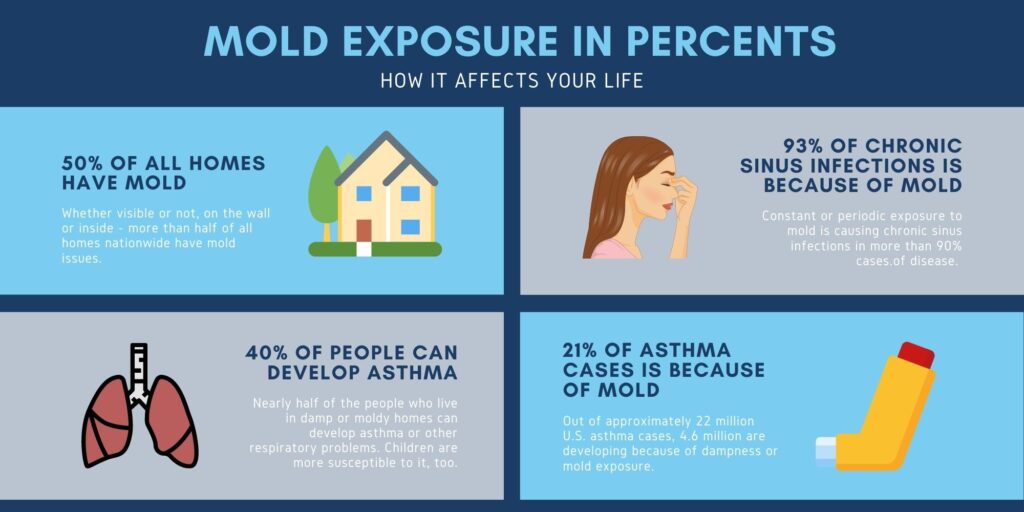In the realm of homes and buildings, mold growth can be a pesky and potentially harmful problem. However, understanding what stops mold from spreading is crucial to effectively tackling this issue. From simple preventative measures like controlling humidity levels and minimizing moisture to promptly addressing any water damage, there are various ways to deter the spread of mold. By prioritizing a clean and dry environment, mold growth can be minimized, ensuring a healthier living space for you and your loved ones.
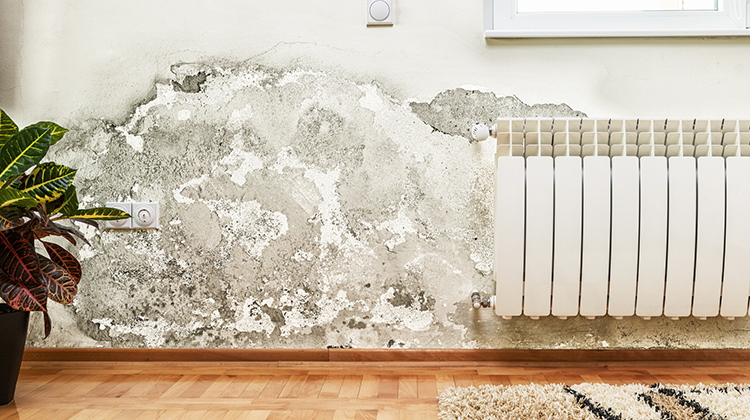

Moisture Control
Moisture control is crucial in preventing and inhibiting the growth and spread of mold in your property. By identifying and fixing leaks, ventilating high-moisture areas, using exhaust fans, and keeping humidity levels low, you can effectively control moisture and create an environment that is less susceptible to mold growth.
Identifying and fixing leaks
One of the primary causes of excess moisture and mold growth is water leaks. Whether it’s a dripping faucet, a leaking pipe, or a leaky roof, it’s essential to identify and fix these issues promptly. Regularly inspect your property for any signs of water stains, dampness, or discoloration on ceilings, walls, or floors. If you notice any leaks, it’s crucial to address them immediately to prevent further damage and the spread of mold.
Ventilating high-moisture areas
Certain areas of your home, such as bathrooms, kitchens, and laundry rooms, are prone to high moisture levels. To prevent mold growth in these areas, proper ventilation is key. Make sure these areas are equipped with proper ventilation systems like exhaust fans or windows that can be opened to allow fresh air in and moist air out. Ventilating high-moisture areas helps to reduce humidity levels and prevent the accumulation of moisture.
Using exhaust fans
Exhaust fans play a vital role in moisture control by removing moisture-laden air from your property. They are especially useful in areas where moisture is generated frequently, such as bathrooms and kitchens. When using these areas, make sure to turn on the exhaust fan to remove excess moisture. Additionally, consider leaving the exhaust fan on for a little longer after using the shower or cooking to ensure proper ventilation and reduce the risk of moisture buildup.
Keeping humidity levels low
Maintaining low humidity levels is essential in preventing mold growth. The optimal indoor humidity range should be between 30-50%. To control humidity levels, consider using dehumidifiers, especially in areas with high moisture content. Dehumidifiers help to extract excess moisture from the air, reducing the risk of mold growth. Additionally, keeping your property adequately ventilated and using air conditioners during humid weather can contribute to maintaining low humidity levels.
Avoiding condensation
Condensation occurs when warm, moist air comes into contact with cold surfaces, leading to moisture accumulation. To avoid condensation, it’s essential to cover cold surfaces like windows with insulating materials or double-glazed windows. Additionally, ensure that your property is adequately insulated to minimize the contrast between indoor and outdoor temperatures, reducing the likelihood of condensation. By avoiding condensation, you can effectively control moisture levels and prevent mold growth.
Proper Ventilation
Proper ventilation is another critical factor in mold prevention and control. By ensuring proper air circulation, opening windows and using fans, and utilizing air purifiers and dehumidifiers, you can effectively maintain a well-ventilated environment that discourages mold growth.
Maintaining proper air circulation
Good air circulation is essential in preventing moisture buildup and mold growth. It helps to distribute fresh air throughout your property, reduce stagnant areas, and create an environment that is less conducive to mold. To maintain proper air circulation, arrange your furniture and belongings in a manner that allows air to flow freely. Avoid blocking air vents or placing furniture directly against walls. Regularly open doors between rooms to promote air movement and use ceiling fans to improve air circulation.
Opening windows and using fans
Natural ventilation is a cost-effective and efficient way to improve indoor air quality and prevent mold growth. Opening windows allows fresh air to enter your property, while stale air is released outdoors. This exchange of air helps to reduce humidity levels and remove moisture. Additionally, using fans can aid in increasing airflow and promoting ventilation. Consider using portable fans or ceiling fans in rooms where air circulation may be limited to enhance ventilation and discourage mold growth.
Ensuring adequate venting in bathrooms and kitchens
Proper venting in bathrooms and kitchens is crucial in preventing moisture buildup and mold growth. Ensure that your bathrooms and kitchens are equipped with exhaust fans that adequately remove moisture-laden air. Exhaust fans should be vented directly to the outdoors, not into the attic or crawl space, as this can lead to further moisture-related issues. Additionally, regularly check and clean the venting systems to ensure their efficiency in removing moisture and preventing the growth of mold.
Utilizing air purifiers and dehumidifiers
Air purifiers and dehumidifiers are valuable tools in maintaining proper ventilation and controlling moisture levels. Air purifiers work by filtering out airborne particles, including mold spores, while dehumidifiers extract excess moisture from the air. These devices are particularly useful in areas where ventilation may be limited, such as basements or rooms with inadequate natural airflow. By utilizing air purifiers and dehumidifiers, you can improve indoor air quality and create an environment that is less prone to mold growth.
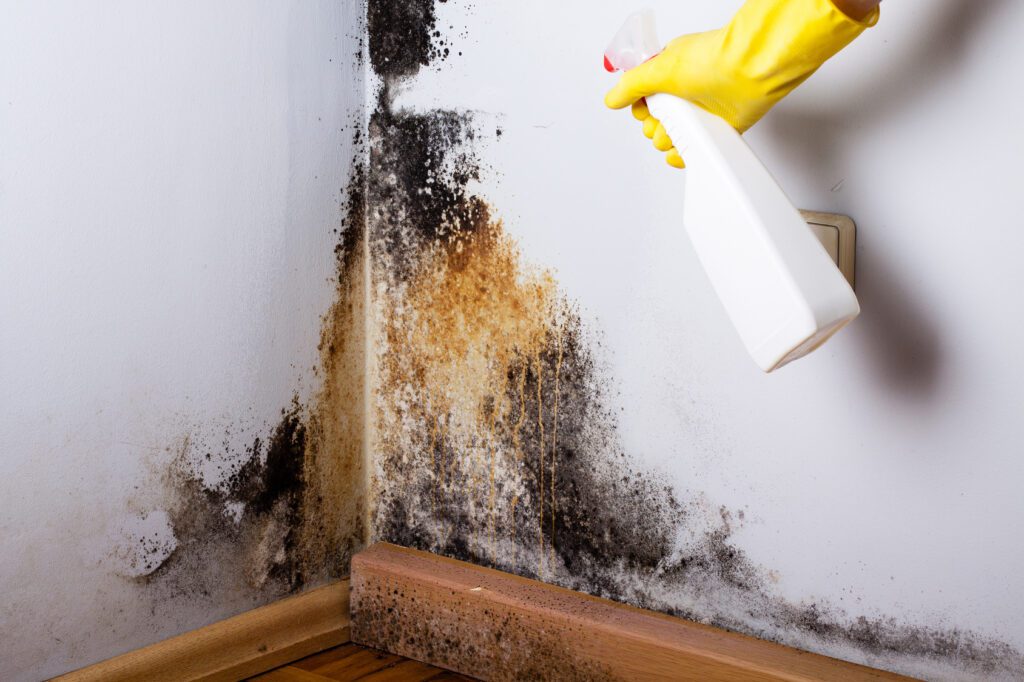

Quickly Addressing Water Damage
Water damage can quickly contribute to mold growth if not addressed promptly and effectively. By drying wet materials within 24-48 hours, removing and replacing water-damaged materials, using professional water extraction services, and preventing water accumulation in basements and crawlspaces, you can prevent the spread of mold and minimize potential damage.
Drying wet materials within 24-48 hours
When water damage occurs, it’s crucial to dry wet materials promptly within 24-48 hours to prevent mold growth. Remove any standing water or excess moisture using towels, mops, or wet/dry vacuums. Open windows and use fans or dehumidifiers to facilitate rapid drying. If necessary, consider using space heaters to expedite the drying process. Additionally, remove any wet or water-damaged materials such as carpet, drywall, or furniture that cannot be adequately dried or salvaged.
Removing and replacing water-damaged materials
Water-damaged materials that cannot be adequately dried or salvaged should be promptly removed and replaced. Mold can quickly develop on porous materials like carpet, insulation, or drywall that have been soaked by water. These materials provide an ideal breeding ground for mold, and it is best to replace them to prevent the spread of mold spores throughout your property.
Using professional water extraction services
In cases of significant water damage, it is beneficial to seek the assistance of professional water extraction services. Water extraction professionals have the expertise and specialized equipment to efficiently remove water and moisture from your property. They can effectively extract water from carpets, upholstery, and other materials using advanced techniques such as industrial-grade water pumps and dehumidifiers. By utilizing professional water extraction services, you can ensure thorough water removal and minimize the risk of mold growth.
Preventing water accumulation in basements and crawlspaces
Basements and crawlspaces are particularly susceptible to water accumulation, which can lead to mold growth if left unaddressed. To prevent water accumulation, ensure that your property has proper drainage systems, such as gutters and downspouts, that effectively direct water away from the foundation. Regularly inspect and clean gutters and downspouts to prevent clogs and ensure proper water flow. Consider installing sump pumps or using waterproofing products to further protect your basement or crawlspace from water intrusion. By preventing water accumulation, you can create a drier environment that is less conducive to mold growth.
Regular Cleaning and Maintenance
Regular cleaning and maintenance are essential in preventing mold growth and maintaining a healthy living environment. By regularly cleaning and inspecting the property, vacuuming and dusting to reduce mold spores, keeping gutters and downspouts clean, regularly maintaining HVAC systems, and cleaning and drying carpets and upholstery, you can effectively control mold and maintain a clean and safe living space.
Regularly cleaning and inspecting the property
Regular cleaning and inspection of your property are crucial in identifying and addressing areas prone to mold growth. Clean and wipe down surfaces regularly to remove dust, dirt, and other debris that can provide a food source for mold. Inspect hidden areas such as utility closets, storage areas, or crawlspaces regularly to identify any signs of mold growth or moisture-related issues. By promptly addressing these areas, you can prevent mold from spreading and minimize potential damage.
Vacuuming and dusting to reduce mold spores
Mold spores can settle on surfaces and contribute to mold growth if left undisturbed. Regular vacuuming and dusting help to remove mold spores and prevent their accumulation in your property. Use a vacuum cleaner equipped with a HEPA filter to effectively trap and contain mold spores, preventing them from being released back into the air. Dust surfaces with a damp cloth or electrostatic duster, as dry dusting can cause mold spores to become airborne and spread.
Keeping gutters and downspouts clean
Clogged gutters and downspouts can lead to water overflow and potential water intrusion into your property. Regularly clean gutters and downspouts to ensure proper water flow and prevent water from seeping into your property’s foundation. Remove leaves, debris, and any other obstructions that may impede water drainage. By keeping gutters and downspouts clean, you can prevent water-related issues and minimize the risk of mold growth.
Regularly maintaining HVAC systems
HVAC systems play a significant role in maintaining indoor air quality and controlling moisture levels. Regular maintenance of these systems is crucial to ensure their efficiency in preventing mold growth. Change air filters regularly to prevent dust and debris buildup that can contribute to mold growth. Schedule professional HVAC inspections and cleanings to ensure that your system is functioning correctly and free from any issues that may lead to excess moisture or mold growth.
Cleaning and drying carpets and upholstery
Carpeting and upholstery can trap moisture, providing an ideal environment for mold growth. Regularly clean and dry carpets and upholstery to prevent mold from developing. Vacuum carpets at least once a week to remove dirt, dust, and other potential food sources for mold. If carpets or upholstery become wet or damp, promptly dry them thoroughly to prevent mold growth. Consider using fans or dehumidifiers to expedite the drying process and ensure that these materials remain dry and mold-free.
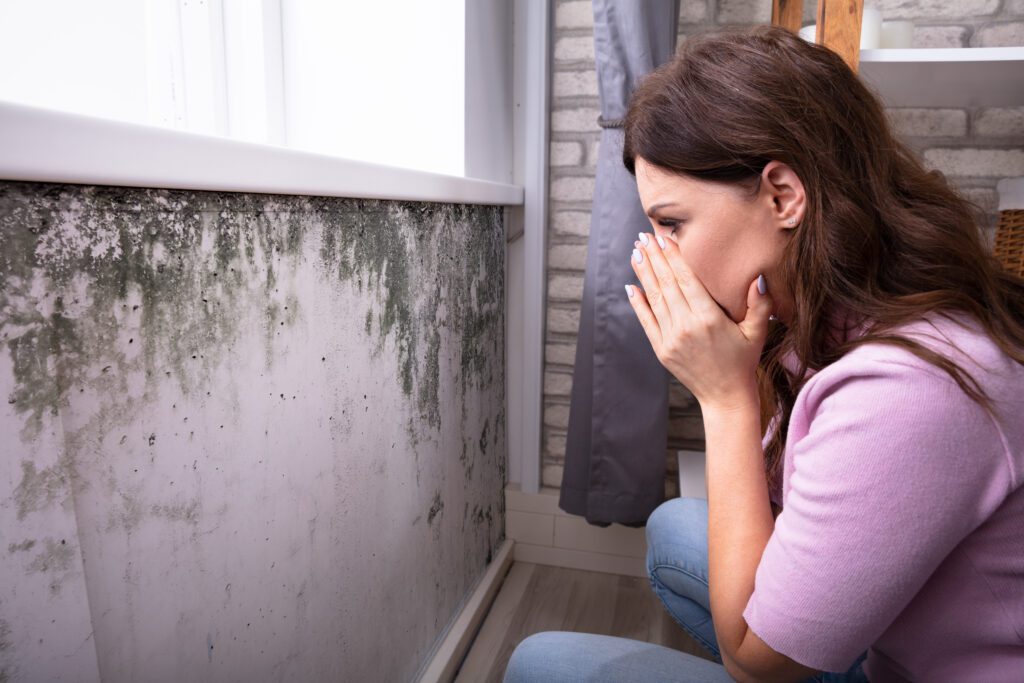

Controlling Relative Humidity
Controlling relative humidity is essential in preventing mold growth and promoting a healthy living environment. By monitoring and maintaining indoor humidity levels, using a hygrometer to measure humidity, implementing proper moisture barriers in construction, and avoiding activities that increase humidity, such as drying clothes indoors, you can effectively control relative humidity and minimize the risk of mold growth.
Monitoring and maintaining indoor humidity levels
Regularly monitor and maintain indoor humidity levels within the recommended range of 30-50%. Excess humidity can create conditions favorable for mold growth. Use a hygrometer, a device that measures humidity levels, to monitor indoor moisture content. If humidity levels exceed the recommended range, consider using a dehumidifier to extract excess moisture or increasing ventilation to promote airflow and reduce humidity.
Using a hygrometer to measure humidity
A hygrometer is a valuable tool in measuring and monitoring indoor humidity levels. By using a hygrometer, you can accurately assess the moisture content in your property and take appropriate measures to maintain optimal humidity levels. Place hygrometers in various areas of your property, especially in rooms prone to high humidity or areas where mold growth is more likely. Regularly check the humidity readings and adjust humidity control measures accordingly.
Implementing proper moisture barriers in construction
Proper moisture barriers are essential in preventing moisture intrusion and controlling humidity levels in your property. During construction or renovation, ensure that appropriate moisture barriers, such as vapor barriers or moisture-resistant insulation, are installed in walls, floors, and ceilings. These barriers help to prevent moisture from permeating into your property’s structure, minimizing the risk of mold growth caused by excess moisture.
Avoiding activities that increase humidity, such as drying clothes indoors
Certain activities can significantly increase indoor humidity levels, contributing to mold growth. Avoid drying clothes indoors, especially in confined spaces without adequate ventilation. Drying clothes indoors releases excess moisture into the air, increasing humidity levels and creating an environment conducive to mold growth. Instead, use outdoor clotheslines or well-ventilated areas to dry your clothes. By avoiding activities that increase humidity, you can effectively control relative humidity and reduce the risk of mold growth.
Using Mold-Resistant Materials
Using mold-resistant materials in construction and renovation is an effective way to prevent mold growth. By choosing mold-resistant drywall and paint, using mold inhibitors in paints and coatings, and installing mold-resistant insulation and carpets, you can create an environment that is inherently more resistant to mold and minimize the risk of mold growth.
Choosing mold-resistant drywall and paint
Mold-resistant drywall and paint are manufactured with added additives that help resist mold growth. These materials contain moisture-resistant components that make them less susceptible to mold infestation. When constructing or renovating your property, consider using mold-resistant drywall and paint in areas prone to high humidity or moisture, such as bathrooms, kitchens, or basements. By incorporating these materials, you can create a more mold-resistant environment.
Using mold inhibitors in paints and coatings
Mold inhibitors are substances added to paints and coatings that prevent mold growth. When selecting paints or coatings for your property, opt for products that contain mold inhibitors. These additives help to inhibit the growth of mold on the painted surfaces, reducing the risk of mold infestation. Mold inhibitors are particularly beneficial in high-moisture areas or rooms that are more susceptible to mold growth.
Installing mold-resistant insulation and carpets
Insulation and carpets can harbor moisture and provide an ideal breeding ground for mold. When choosing insulation and carpets for your property, consider using mold-resistant options. Mold-resistant insulation is made with materials that are less prone to retaining moisture and promoting mold growth. Mold-resistant carpets are designed to resist moisture absorption and are easier to clean and maintain. By using mold-resistant insulation and carpets, you can minimize the risk of mold growth in your property.
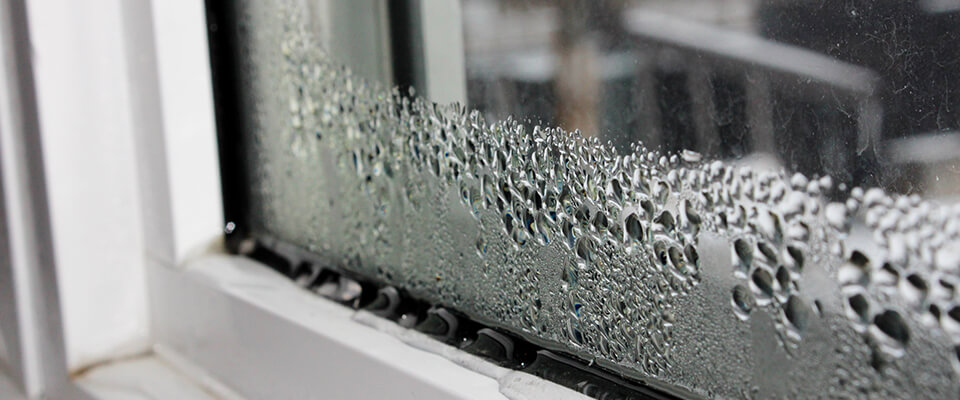

Effective Mold Remediation
In the unfortunate event of mold growth, effective mold remediation is crucial to ensure the safe and proper removal of mold. By identifying and isolating mold sources, properly containing affected areas, removing mold-infested materials, implementing thorough cleaning and disinfection procedures, and ensuring the proper disposal of contaminated materials, you can successfully remediate mold and prevent its reoccurrence.
Identifying and isolating mold sources
The first step in mold remediation is identifying and isolating the source of mold growth. Conduct a thorough inspection of your property to locate areas affected by mold. Look for visible signs of mold, such as discoloration or a musty odor. If necessary, consult a professional mold inspector to accurately identify areas affected by mold. Once mold sources are identified, isolate the affected areas by sealing them off from the rest of the property to prevent the spread of mold spores during remediation.
Properly containing affected areas
Containment is a critical step in mold remediation to prevent cross-contamination and the spread of mold spores to unaffected areas. Use plastic sheeting to create a containment barrier around the affected areas. Seal all openings, such as doors, windows, and vents, with plastic sheeting and tape to ensure an airtight seal. This containment barrier will prevent mold spores from escaping and spreading to other areas of your property during the removal process.
Removing mold-infested materials
Mold-infested materials should be promptly and safely removed to prevent further mold growth. Porous materials, such as drywall, carpet, or insulation, that are extensively affected by mold may need to be completely removed and replaced. Non-porous materials, such as glass or metal surfaces, can be cleaned and disinfected to remove mold. When removing mold-infested materials, wear personal protective equipment, such as gloves, goggles, and a respirator, to protect yourself from exposure to mold spores.
Implementing thorough cleaning and disinfection procedures
Thorough cleaning and disinfection are essential in removing mold and preventing its reoccurrence. Vacuum and clean all affected areas using a HEPA vacuum cleaner to remove mold spores and debris. Clean surfaces with a mold-specific cleaner or a mixture of water and detergent to remove mold growth. After cleaning, disinfect all surfaces using a solution of water and bleach or a commercial mold disinfectant. Properly dispose of cleaning materials and any contaminated materials to prevent cross-contamination and the spread of mold spores.
Ensuring proper disposal of contaminated materials
Proper disposal of mold-contaminated materials is crucial to prevent the spread of mold spores and potential recontamination. Seal all mold-infested materials in plastic bags before removing them from your property. Dispose of these bags in accordance with local regulations for hazardous waste or contact a professional mold removal service to handle proper disposal. By ensuring the proper disposal of contaminated materials, you can effectively eliminate mold and reduce the risk of its reoccurrence.
Preventing Excess Moisture
Preventing excess moisture is a key component in mold prevention. By using proper ventilation during activities that generate moisture, covering cold surfaces to prevent condensation, avoiding overwatering plants and controlling indoor humidity, and using moisture-resistant covers for mattresses and upholstered furniture, you can effectively control moisture levels and minimize the risk of mold growth.
Using proper ventilation during activities that generate moisture
Activities that generate moisture, such as cooking, showering, or doing laundry, can contribute to excess humidity and moisture buildup. To prevent mold growth, use proper ventilation during these activities. Turn on exhaust fans or open windows to allow moist air to escape and fresh air to enter. Proper ventilation helps to reduce humidity levels and prevent moisture accumulation, creating a less favorable environment for mold growth.
Covering cold surfaces to prevent condensation
Condensation occurs when warm, moist air comes into contact with cold surfaces, leading to moisture accumulation. To prevent condensation and moisture buildup, cover cold surfaces like windows with insulating materials or double-glazed windows. These coverings help to maintain a more consistent temperature, reducing the contrast between warm air and cold surfaces and minimizing the risk of condensation.
Avoiding overwatering plants and controlling indoor humidity
Indoor plants can contribute to mold growth if they are overwatered or if their pots do not have proper drainage. Avoid overwatering your plants and ensure that water drains freely from their pots. Additionally, control indoor humidity levels by monitoring and maintaining optimal humidity ranges. Excess humidity can promote mold growth, so it’s crucial to strike a balance between providing adequate moisture for your plants and preventing excessive moisture that can lead to mold growth.
Using moisture-resistant covers for mattresses and upholstered furniture
Mattresses and upholstered furniture can absorb and retain moisture, providing an ideal environment for mold growth. To minimize the risk of mold on these surfaces, use moisture-resistant covers. These covers create a barrier that prevents moisture from penetrating and reaching the vulnerable materials. Moisture-resistant covers are especially beneficial in areas with high humidity or where moisture may be more likely, such as basements or rooms with poor ventilation.
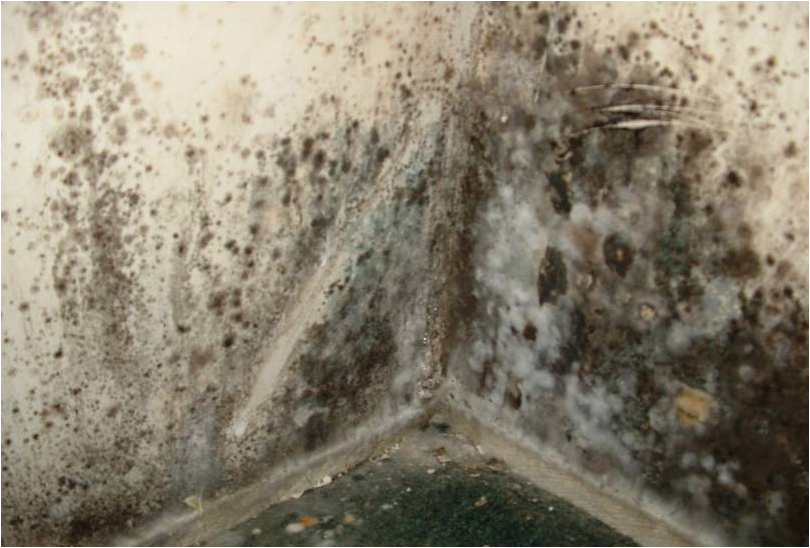

Regular Inspections
Regular inspections are essential in identifying and addressing potential moisture-related issues and mold growth. By periodically checking for signs of water leaks, inspecting hidden areas prone to moisture buildup, conducting professional mold inspections, and monitoring and addressing recurring moisture issues, you can stay proactive in mold prevention and maintain a mold-free environment.
Periodically checking for signs of water leaks
Regularly check for signs of water leaks throughout your property. Look for water stains, dampness, or discoloration on ceilings, walls, or floors. Inspect plumbing fixtures, such as faucets, pipes, and water supply lines, for any signs of leaks or dripping water. Promptly address any leaks or water-related issues to prevent further damage and inhibit mold growth.
Inspecting hidden areas prone to moisture buildup
Hidden areas, such as utility closets, storage areas, or crawlspaces, are prone to moisture buildup and are often overlooked during regular inspections. Periodically inspect these areas to identify any signs of moisture, mold growth, or water intrusion. Check for condensation, dampness, or musty odors, as these could indicate moisture-related problems. By inspecting hidden areas, you can identify and address potential issues before they develop into more significant mold problems.
Conducting professional mold inspections
In addition to regular inspections, consider conducting professional mold inspections to ensure comprehensive mold detection. Professional mold inspectors have the expertise and equipment necessary to identify and assess areas affected by mold. They can conduct air quality tests, surface sampling, and visual inspections to determine the extent of mold growth and identify potential sources of moisture. Professional mold inspections provide a thorough assessment of mold-related issues in your property and help develop effective strategies for mold prevention and remediation.
Monitoring and addressing recurring moisture issues
If you experience recurring moisture issues in specific areas of your property, it’s crucial to monitor and address them promptly. Recurring moisture problems can indicate underlying issues that contribute to mold growth. Regularly check these areas for excess moisture, mold growth, or signs of water leaks. Consider implementing additional moisture control measures, such as increasing ventilation or using dehumidifiers, to effectively address and prevent recurring moisture issues.
Educating and Raising Awareness
Educating yourself and others about mold prevention and the risks associated with mold exposure is essential in creating awareness and maintaining a healthy living environment. By providing information about mold prevention, promoting proper moisture control practices, educating on the health risks of mold exposure, and encouraging prompt reporting of water damage, you can empower yourself and those around you to take proactive measures in mold prevention.
Providing information about mold prevention
Educate yourself and others about mold prevention techniques and best practices. Share information on proper moisture control, ventilation, cleaning, and maintenance measures that can effectively prevent mold growth. Provide materials such as brochures or educational resources explaining the importance of mold prevention and the steps that can be taken to mitigate mold-related issues.
Promoting proper moisture control practices
Emphasize the significance of proper moisture control practices in preventing mold growth. Encourage the use of exhaust fans, proper ventilation, and dehumidifiers to control humidity levels. Stress the importance of promptly addressing water leaks and maintaining a clean and dry living environment. By promoting proper moisture control practices, you can create a more mold-resistant environment.
Educating on the health risks of mold exposure
Educate yourself and others on the potential health risks associated with mold exposure. Mold can trigger various respiratory problems, allergic reactions, and exacerbate existing health conditions. Provide information on common symptoms of mold exposure, such as coughing, wheezing, or skin irritation, and the long-term effects that prolonged exposure to mold can have on health. Encourage individuals to seek medical attention if they suspect mold-related health issues.
Encouraging prompt reporting of water damage
Encourage individuals to promptly report any water damage or signs of moisture-related issues. Stress the importance of addressing water damage immediately to prevent the spread of mold and minimize potential damage. Create an environment where individuals feel comfortable reporting water leaks or other moisture-related problems to ensure that timely action can be taken to prevent mold growth.
In conclusion, effective mold prevention and control involve various measures, ranging from moisture control and proper ventilation to regular cleaning and maintenance. By implementing these strategies and staying proactive in identifying and addressing moisture-related issues, you can create a mold-resistant environment that promotes a healthy and safe living space. Remember to educate yourself and others about mold prevention, raise awareness about the health risks of mold exposure, and encourage prompt reporting of water damage to maintain a mold-free environment. With these measures in place, you can minimize the risk of mold growth and create a comfortable living environment for you and your loved ones.


